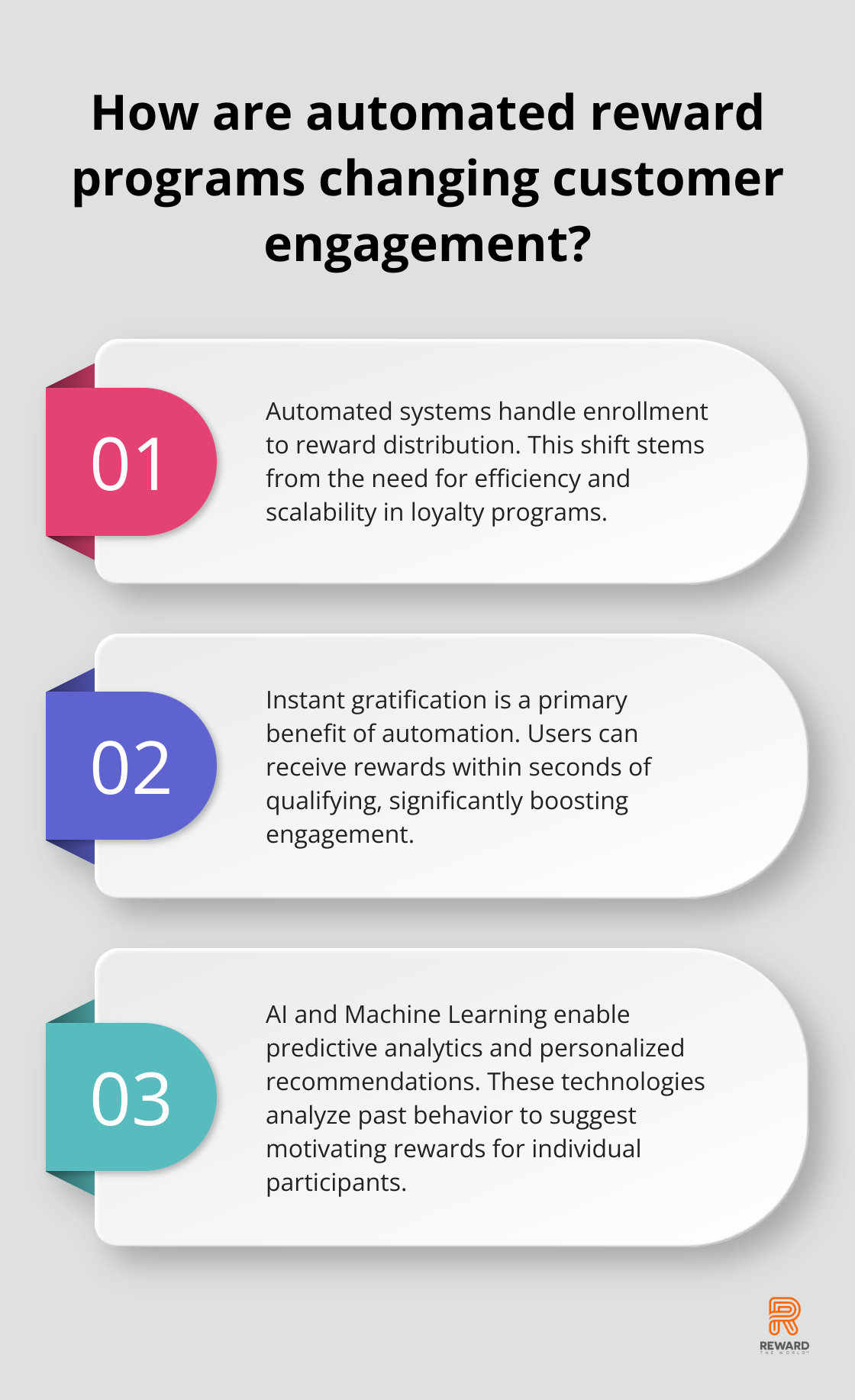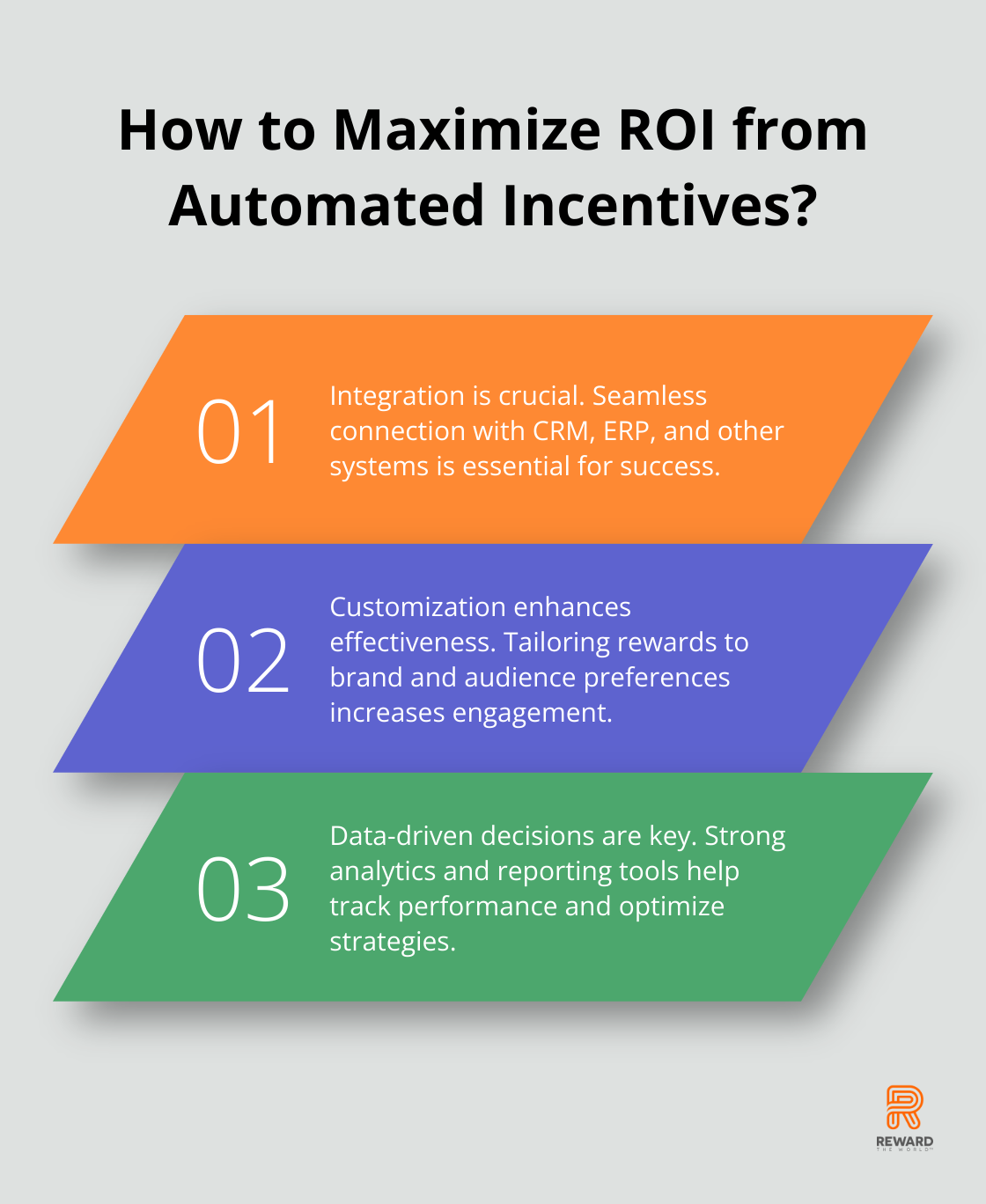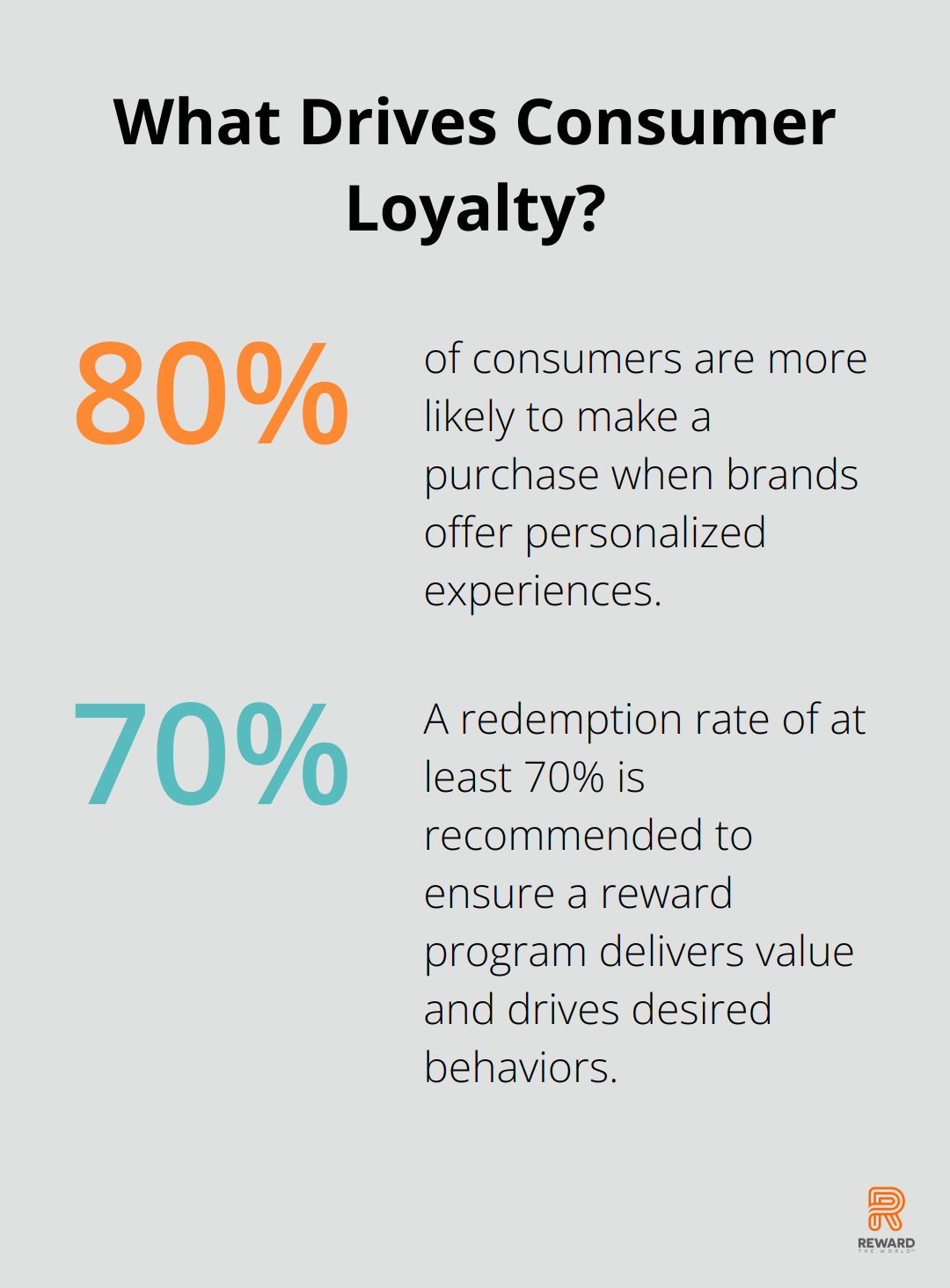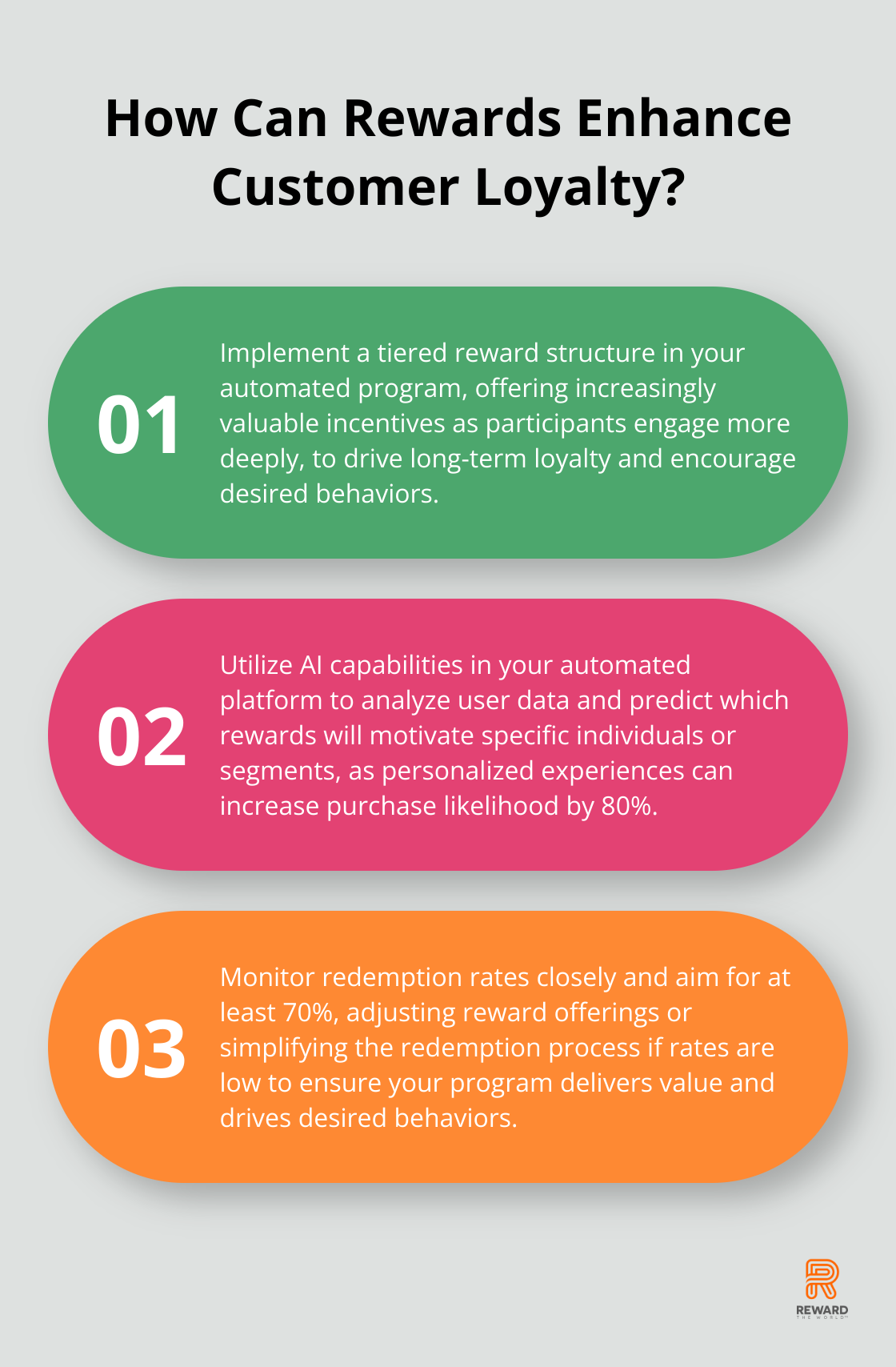
Reward programs are evolving rapidly, and incentive automation is at the forefront of this transformation. Gone are the days of manual tracking and tedious point calculations.
At Reward the World, we’re witnessing a revolution in how businesses engage customers and employees through automated reward systems. This blog post explores the future of reward programs, highlighting the benefits, implementation strategies, and ways to maximize ROI through automation.
How Automated Reward Programs Are Changing the Game
The Shift from Manual to Automated Systems
Reward programs have undergone a dramatic transformation in recent years. The days of spreadsheets and manual point calculations are over. Automated systems now handle everything from enrollment to reward distribution with minimal human intervention. This shift stems from the need for efficiency and scalability. Companies are strengthening their loyalty platforms with cloud technology to preserve trust with their customers.
Tangible Benefits of Automation
Automation brings numerous advantages to reward programs. The ability to deliver instant gratification stands out as a primary benefit. Users can receive their rewards within seconds of qualifying, which significantly boosts engagement. The use of tangible rewards in the United States has increased substantially over the years.

Data accuracy is another crucial advantage. Automated systems eliminate human error in tracking and calculations, ensuring fairness and transparency. This accuracy extends to compliance, with platforms maintaining GDPR standards automatically, thus reducing legal risks for businesses.
Technologies Powering the Automation Revolution
Several key technologies drive this automation trend. Artificial Intelligence (AI) and Machine Learning (ML) lead the charge, enabling predictive analytics and personalized reward recommendations. AI algorithms can analyze past behavior to suggest rewards that are most likely to motivate individual participants.
Blockchain technology is also making waves in the reward space. Its decentralized nature offers enhanced security and transparency (particularly valuable for high-value rewards or points-based systems). While still in its early stages, blockchain has the potential to revolutionize how rewards are stored, transferred, and redeemed.
Real-Time Analytics for Informed Decision Making
One of the most powerful aspects of automated reward programs is the wealth of real-time data they provide. Businesses can track engagement metrics, redemption rates, and ROI in real-time, allowing for quick adjustments to maximize program effectiveness. Improving the experience of existing customers can deliver breakthrough growth for incumbent companies-often more than double that of their industry peers.
As we move forward, the implementation of these automated systems becomes a critical step for businesses looking to stay competitive in the rewards space. The next section will explore the practical aspects of implementing automated incentives, including platform selection and integration strategies.
How to Implement Automated Incentives
Selecting the Right Automation Platform
The first step in implementing automated incentives is to choose the right platform. Look for a solution that offers flexibility, scalability, and robust features. When evaluating platforms, consider these key factors:
- Integration capabilities: The platform should connect seamlessly with your existing CRM, ERP, and other business systems.
- Customization options: Select platforms that allow you to tailor rewards to your brand and audience preferences.
- Analytics and reporting: Choose a solution with strong data analysis tools to track performance and make data-driven decisions.
- User experience: Opt for a platform with an intuitive interface for both administrators and end-users.
Seamless Integration with Existing Systems
After you select your platform, the next critical step is integration. This process should minimize disruption to your existing operations. Here are some best practices:
- Conduct a thorough audit of your current systems and data structures.
- Collaborate closely with your IT team and the platform provider to map out integration points.
- Perform comprehensive testing before full deployment to identify and resolve any issues.
- Plan for data migration, ensuring all historical reward data transfers accurately to the new system.
Best Practices for Implementation
To ensure a successful rollout of your automated incentive program, consider these proven strategies:
- Pilot program: Launch a small-scale pilot to test the system and gather feedback before full implementation.
- Employee training: Provide comprehensive training for your team to maximize the platform’s potential.
- Clear communication: Inform all stakeholders throughout the implementation process.
- Phased approach: Consider a gradual rollout to different departments or user groups to manage the transition effectively.
Maximizing Platform Features
To get the most out of your automated incentive platform, utilize its full range of features. Take advantage of features like:
- Real-time analytics to track program performance and make data-driven adjustments.
- Personalization tools to tailor rewards to individual preferences and behaviors.
- Multi-channel delivery options to reach users through their preferred platforms.

The implementation of automated incentives sets the foundation for a successful reward program. However, the true value lies in maximizing the return on investment (ROI) from these systems. In the next section, we’ll explore strategies to optimize your automated reward program for maximum impact and ROI.
How to Maximize ROI with Automated Reward Programs
Leverage Data-Driven Decision Making
Automated reward programs offer significant potential for increasing return on investment (ROI). The foundation of a high-performing program is data. Real-time analytics enable informed decisions that directly impact your bottom line. Establish clear KPIs that align with your business objectives, such as customer retention rates, average order value, or employee productivity metrics.

Use your platform’s analytics tools to segment your audience based on behavior, preferences, and engagement levels. This detailed approach allows you to customize rewards and communications for maximum impact. Research from Epsilon indicates that 80% of consumers are more likely to make a purchase when brands offer personalized experiences.
Implement Personalization Strategies
Generic reward programs no longer suffice. Today’s consumers and employees expect personalized experiences that resonate with their individual preferences. Use your automated platform’s AI capabilities to analyze user data and predict which rewards will motivate specific individuals or segments.
Consider a tiered reward structure that offers increasingly valuable incentives as participants engage more deeply with your program. This approach can drive long-term loyalty and encourage desired behaviors. According to Accenture, AI is reshaping shopping with personalized experiences, tackling information overload, and strengthening customer relationships.
Optimize Program Performance Continuously
Maximizing ROI requires ongoing effort, not a one-time action. Review your program’s performance metrics regularly and make data-driven adjustments. A/B testing is an effective tool for optimizing various elements of your reward program, from reward offerings to communication strategies.
Monitor redemption rates closely. Low redemption can indicate that your rewards lack appeal or that the redemption process is too complex. Try to achieve a redemption rate of at least 70% to ensure your program delivers value to participants and drives the desired behaviors.
Gather and Utilize User Feedback
Don’t underestimate the importance of user feedback. Implement surveys and feedback mechanisms within your automated platform to collect qualitative insights that complement your quantitative data. This comprehensive approach to program evaluation will help you identify areas for improvement and innovation.
Choose the Right Platform
Selecting the right automated reward platform is essential for maximizing ROI. Look for solutions that offer flexibility, scalability, and robust features. Key factors to consider include integration capabilities, customization options, analytics tools, and user experience.
While many platforms exist (e.g., Incentive Solutions, Xoxoday), Reward the World stands out as a top choice. With its massive 250 million-user base, instant reward delivery, and availability in 15 languages, Reward the World offers a comprehensive solution for businesses aiming to boost customer engagement and company performance.
Final Thoughts
The future of reward programs lies in automation. Automated systems offer increased efficiency, scalability, and instant gratification to participants. Real-time data analytics enable businesses to make informed decisions, while personalization capabilities ensure rewards resonate with individual preferences.

We anticipate exciting trends in automated reward programs. Artificial intelligence and machine learning will evolve, offering more sophisticated predictive analytics and personalization options. Blockchain technology will revolutionize reward security and transferability, while gamification elements will boost engagement and motivation.
For businesses ready to embrace incentive automation, Reward the World offers a comprehensive solution. It provides instant reward delivery, multi-language support, and a vast user base of 250 million. Conduct a thorough assessment of your current reward program, research potential platforms, and run a pilot program to test the waters.
